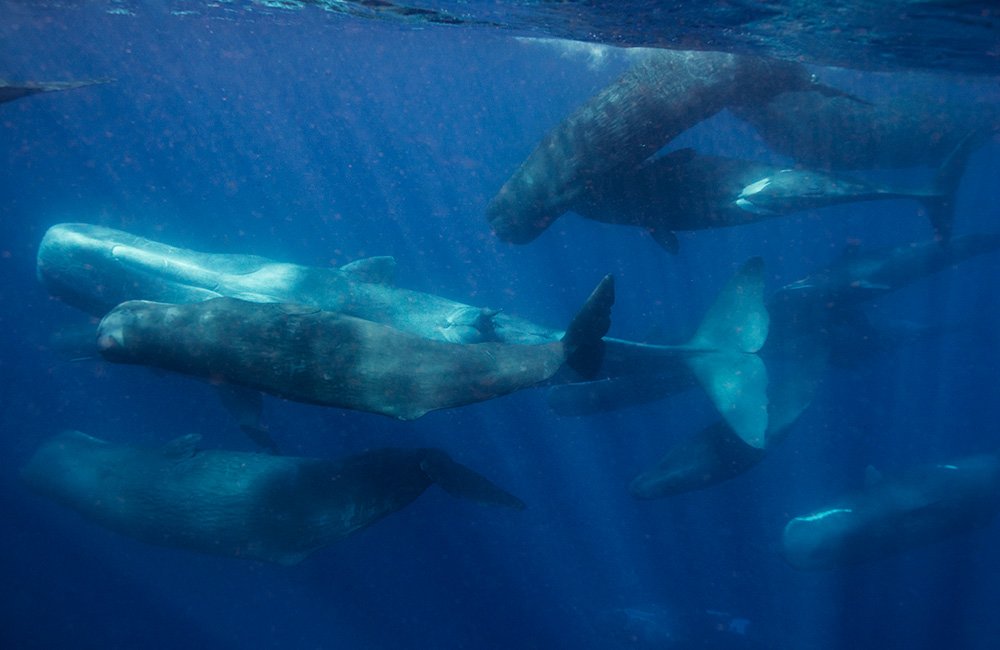
In the chilly waters off the New England coast, researchers from the Cetacean Translation Initiative, Project CETI, can spend hours searching and waiting for an elusive sperm whale to surface. During the minutes the whales spend above water, the researchers need to gather as much information as possible before the animals dive back beneath the surface for long periods.
With one of the widest global distributions of any marine mammal species, these whales are difficult to track down, and even more difficult to learn from. Project CETI aims to use robotics and artificial intelligence to decode the vocalizing of sperm whales. It recently released research about how it tracks down sperm whales across the wide ocean.
“The ocean and the natural habitat of the whales is this vast place where we don’t have a lot of infrastructure, so it’s hard to build infrastructure that will always be able to observe the whales,” said Stephanie Gil, an assistant professor of Computer Science at the Harvard John A. Paulson School of Engineering and Applied Sciences (SEAS) and an advisor on the project.
The project brings together some of the world’s leading scientists in biology, linguistics, robotics, and more. The founder of Project CETI, David Gruber, estimated that it’s one of the largest multi-disciplinary research projects active today.
“Project CETI was formed in March 2020, and we’re now over 50 scientists across eight different disciplines,” he said. “I think we’re over 15 institutions, which I believe puts us as one of the most interdisciplinary, large-scale science projects that’s ever been conducted. It’s incredibly rewarding to see so many disciplines working together.”
Project CETI shares latest research
The researchers at the nonprofit organizationhave developed a reinforcement learning framework that uses autonomous drones to find sperm whales and predict where they will surface. The paper, published in Science Robotics, said it’s possible to predict when and where a whale may surface using various sensor data and predictive models of sperm whale dive behavior.
This new study involved various sensing devices, such as Project CETI aerial drones with very high frequency (VHF) signal sensing capability that use signal phase along with the drone’s motion to emulate an “antenna array in the air” for estimating the direction of pings from CETI’s on-whale tags.
“There are two basic advantages of [VHF signals]. One is that they are really low power, so they can operate for a really, really long time in the field, like months or even years. So, once those small beacons are deployed on the tag, you don’t have to really replace the batteries,” said Ninad Jadhav, a co-author on the paper and a robotics and engineering Ph.D. student at Harvard University.
“The second thing is these signals that these tags transmit, the VHF, are very high-frequency signals,” he added. “They can be detected at really long ranges.”
“That’s a really huge advantage because we never know when the whales will surface or where they will surface, but if they have been tagged before, then you can sense, for example, simple information such as the direction of the signal,” Jadhav told The Robot Report. “You can deploy an algorithm on the robot to detect that, and that gives us an advantage of finding where the whales are on the surface.”
Content retrieved from: https://www.therobotreport.com/project-ceti-uses-ai-and-robotics-to-track-down-sperm-whales/.






